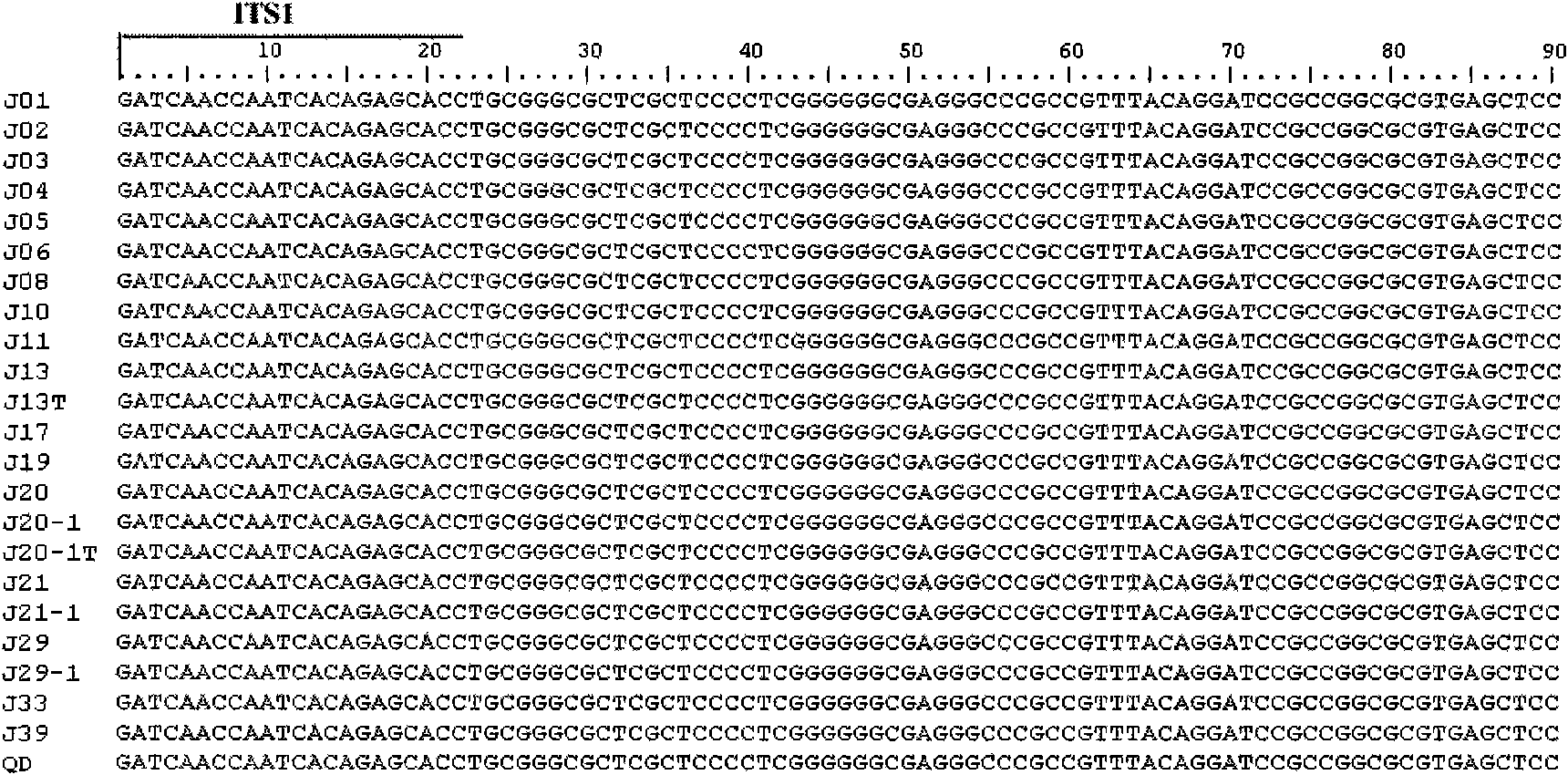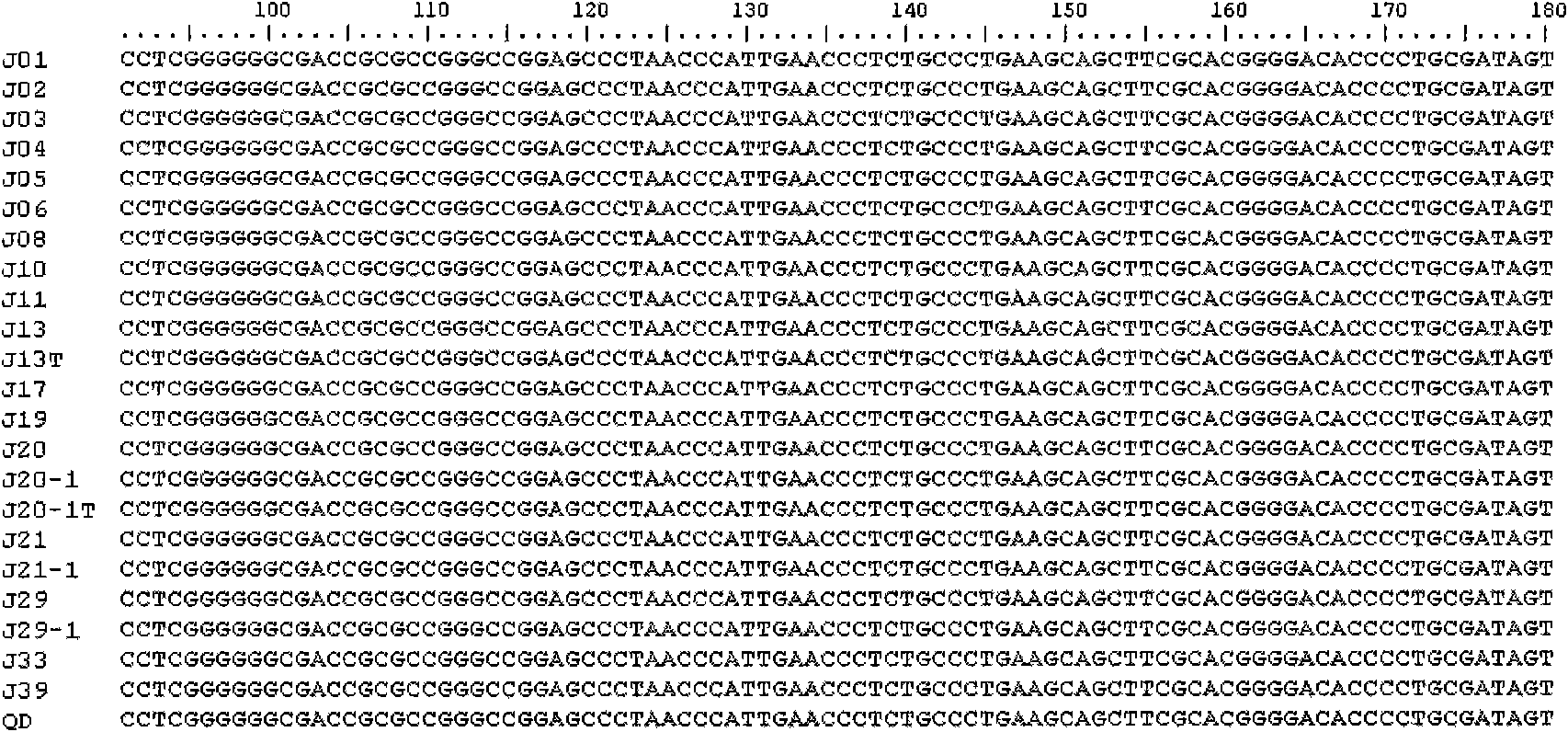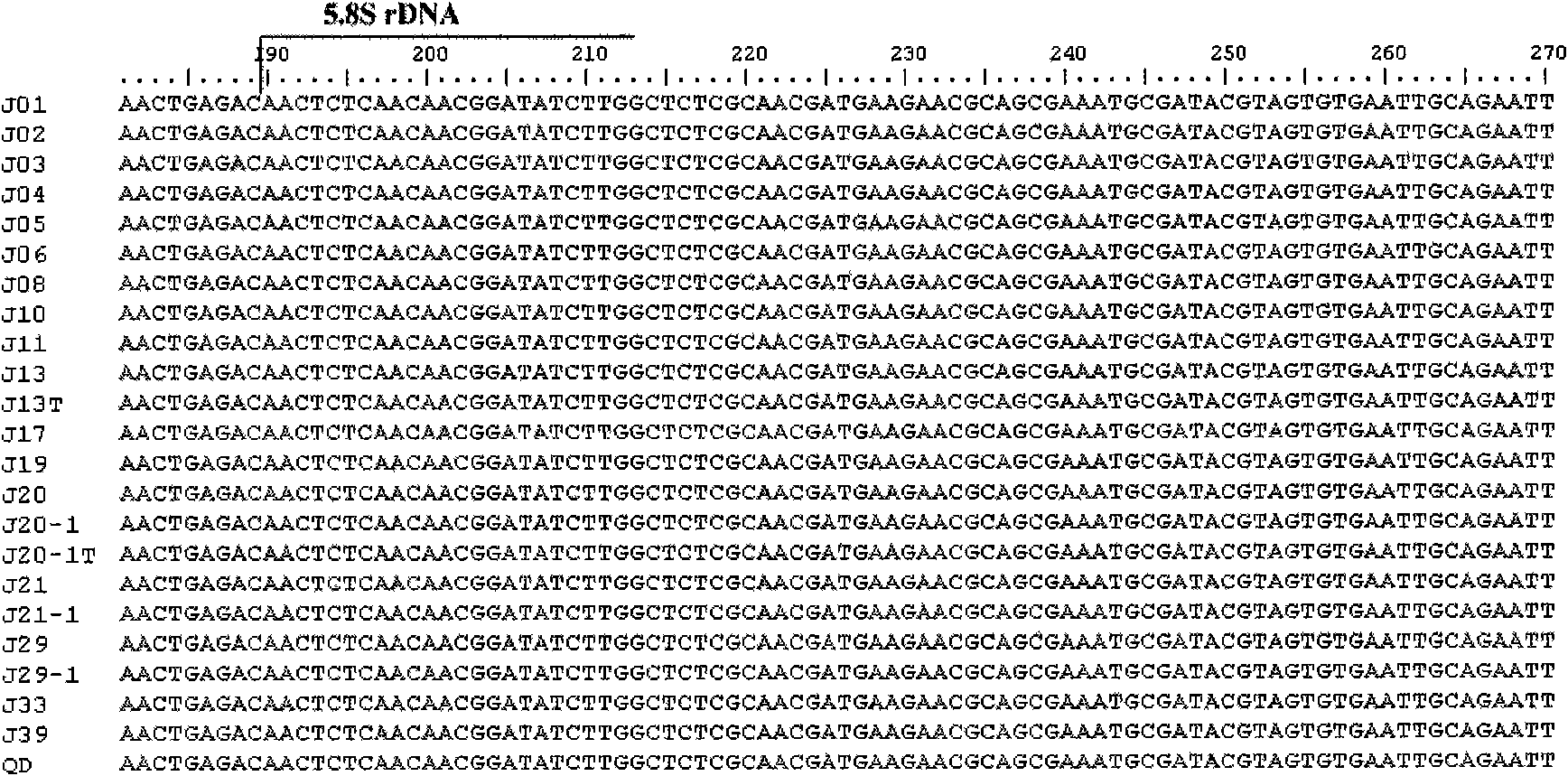Detection method of enteromorpha micro-generation fluorescence in-situ hybridization
A fluorescent in situ hybridization and detection method technology, applied in the field of green tide biological detection and monitoring research, can solve the problem of less research, achieve the effect of short time, good specificity, and time saving
- Summary
- Abstract
- Description
- Claims
- Application Information
AI Technical Summary
Problems solved by technology
Method used
Image
Examples
Embodiment
[0072] 1. Obtaining samples
[0073] The experiment started in June 2008 and ended in July 2008. The water body samples were collected from the intertidal zone with dense floating Enteromorpha in Qingdao Second Beach (35.35°N, 119.30°E, 10-35cm below the water surface) on June 15, 2008. The operation process after collecting the samples is the same as the above-mentioned experimental operation. A total of 55 water samples were collected, each 5L. In the laboratory, use a 10μm sieve to filter and concentrate to reduce the volume of water to 100mL.
[0074] 2. Probe design
[0075] The oligonucleotide probes used in Enteromorpha for FITC-labeled in situ hybridization (designed according to the ITS sequence) were designed in the same way as the above method, and the 5' end was labeled with FITC. A total of 4 probes were designed:
[0076] 1) 5'-GCCCGCCGTTTACAGGAT-3'
[0077] 2) 5'-AGCCCTAACCCATTGAACCC-3'
[0078] 3) 5'-CCCTGCGATAGTAACTGAGACA-3'
[0079] 4) 5'-GGAGCCCTAACCC...
PUM
 Login to View More
Login to View More Abstract
Description
Claims
Application Information
 Login to View More
Login to View More - R&D
- Intellectual Property
- Life Sciences
- Materials
- Tech Scout
- Unparalleled Data Quality
- Higher Quality Content
- 60% Fewer Hallucinations
Browse by: Latest US Patents, China's latest patents, Technical Efficacy Thesaurus, Application Domain, Technology Topic, Popular Technical Reports.
© 2025 PatSnap. All rights reserved.Legal|Privacy policy|Modern Slavery Act Transparency Statement|Sitemap|About US| Contact US: help@patsnap.com



